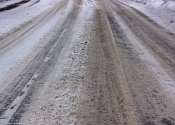A possible explanation for the mysterious ice circles in Lake Baikal
A team of researchers affiliated with several institutions in Russia and one in France has found a possible explanation for the creation of ice circles in Lake Baikal—the deepest lake in the world. In their paper published ...









